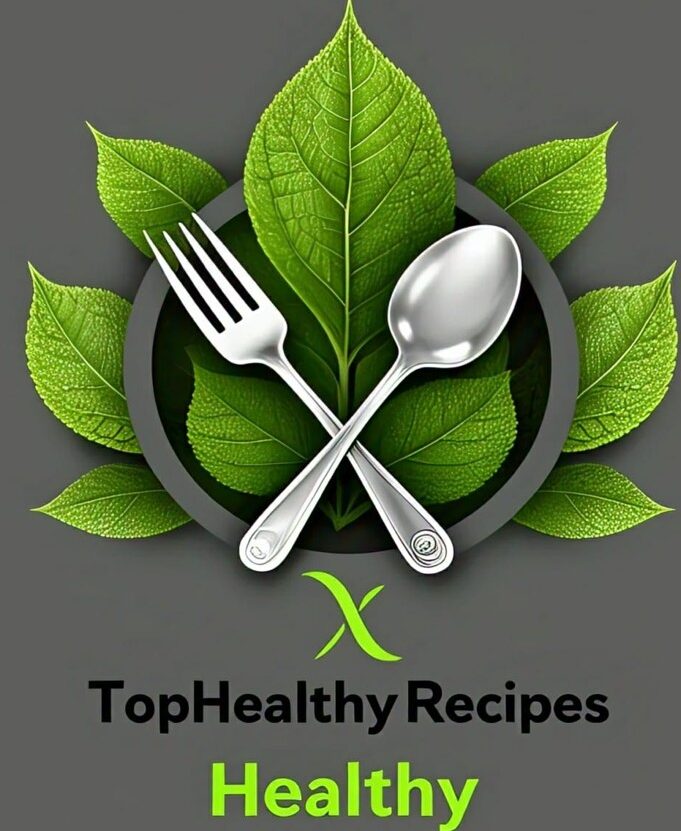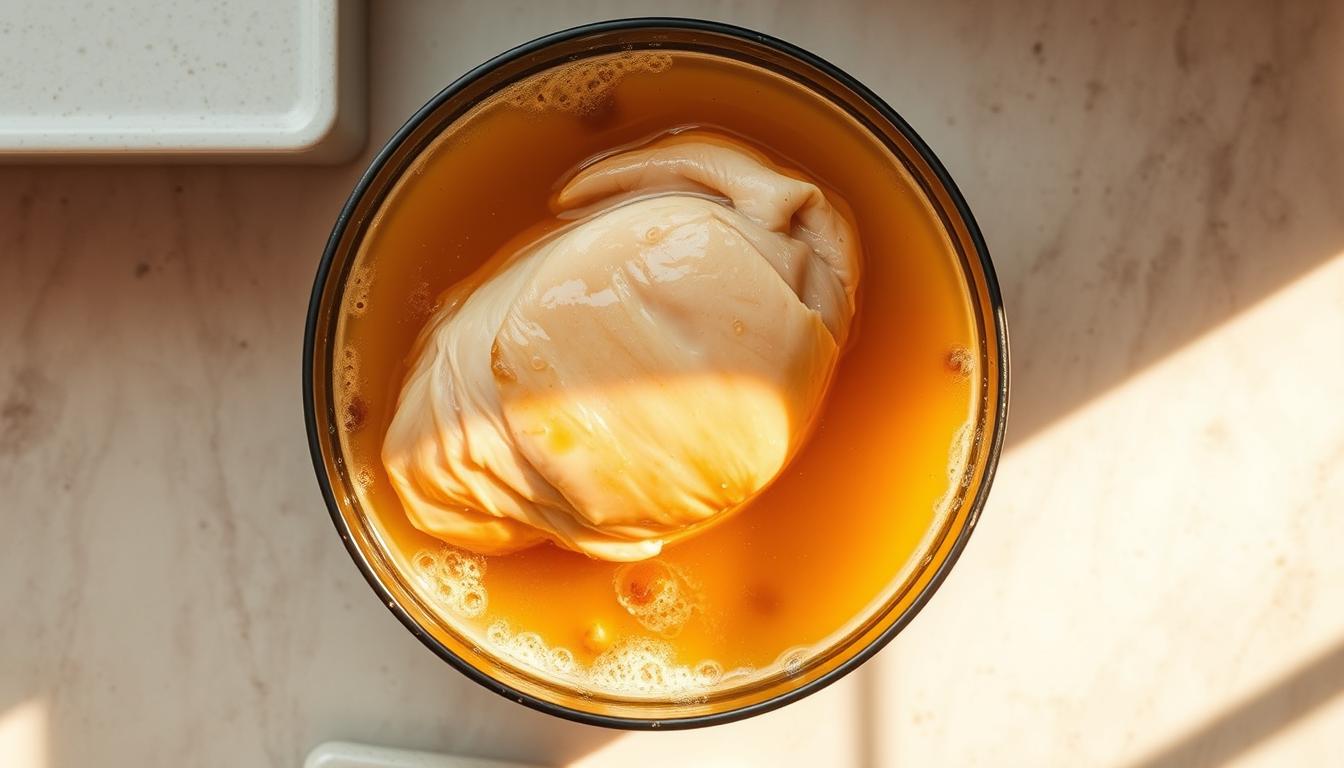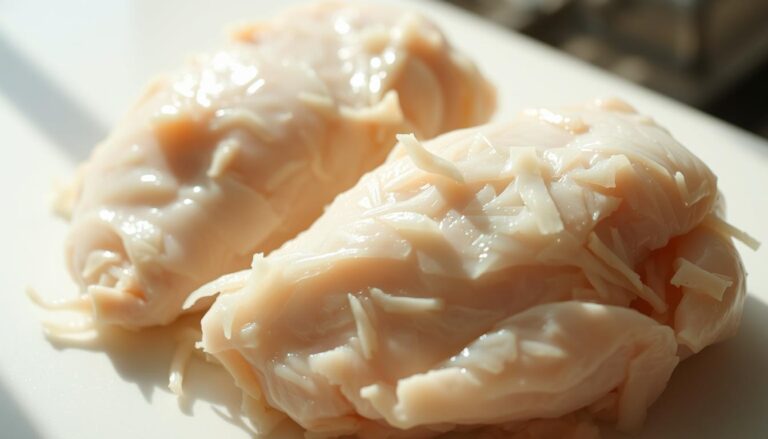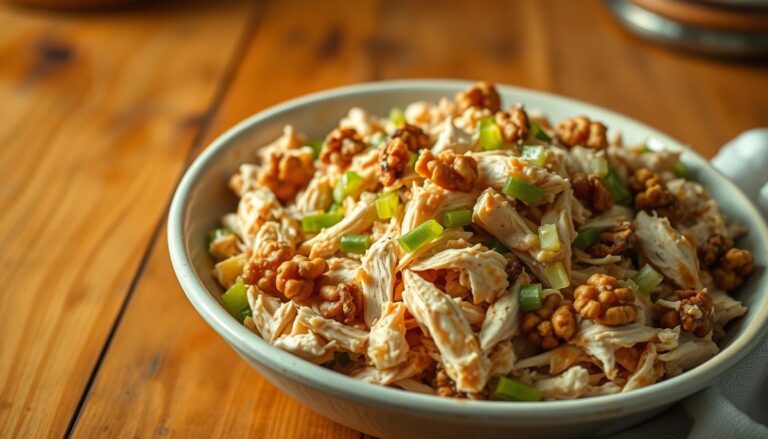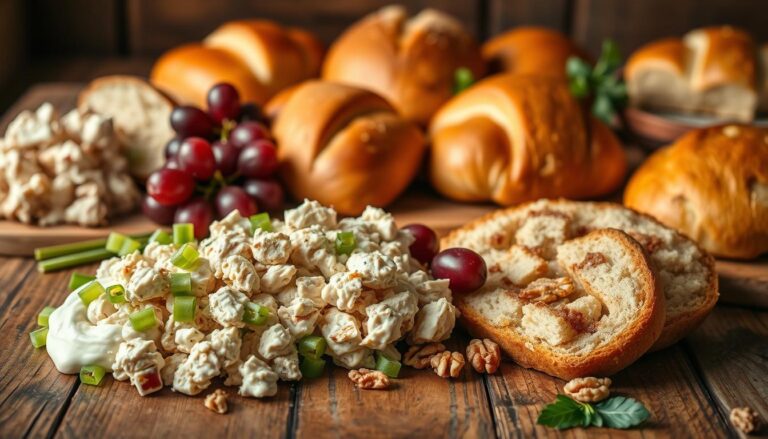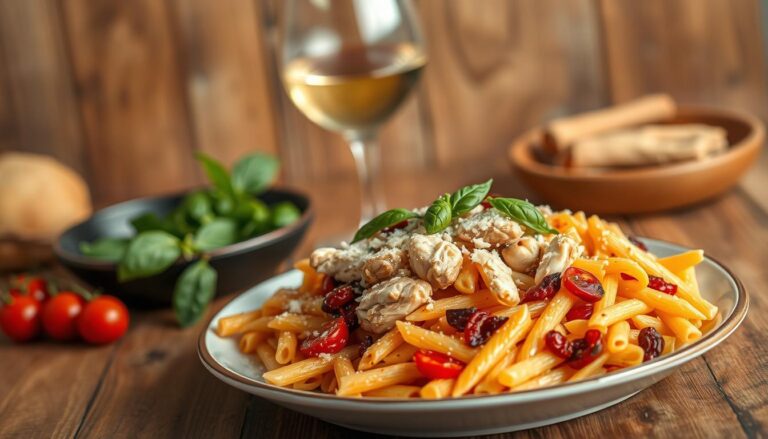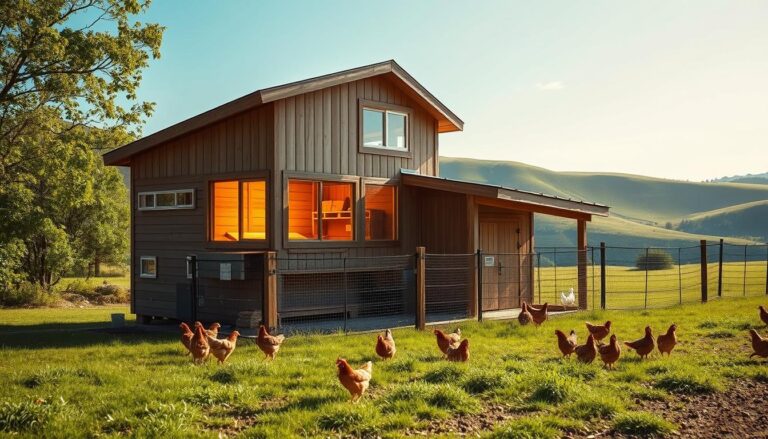How Long Does Chicken Breast Take to Boil: Cooking Times
Table of Contents
How Long Does Chicken Breast Take to Boil: Cooking Times
Boiling is one of the easiest ways to prepare tender, juicy poultry. Whether you need protein for salads, soups, or casseroles, this method locks in moisture while keeping things simple.
Cook times vary based on key factors. Boneless cuts cook faster than bone-in pieces. Frozen options take slightly longer than fresh ones. Always aim for an internal temperature of 165°F to ensure safety.
Better Homes & Gardens Test Kitchen experts recommend gentle simmering for best results. This prevents toughness while preserving flavor. Perfectly cooked meat should shred easily with a fork.
Key Takeaways
- Boiling keeps poultry moist and tender for various dishes.
- Boneless pieces cook quicker than bone-in varieties.
- Always check that the internal temperature reaches 165°F.
- Frozen cuts require extra time compared to fresh ones.
- Simmer gently to avoid tough, overcooked results.
Introduction to Boiling Chicken Breast
Mastering poultry preparation starts with understanding boiling basics. This method locks in moisture, making it ideal for salads, soups, or quick protein-packed meals. The Better Homes & Gardens Test Kitchen endorses it for fuss-free weeknight cooking.
Boiling and poaching differ slightly. Boiling uses bubbling water, while poaching relies on a gentler simmer. Both methods preserve tenderness better than high-heat techniques like grilling.
Choose cuts wisely. Boneless breasts cook fastest, while bone-in pieces add depth to broths. Cut-up chicken works well for stews. Always follow FDA guidelines: cook to 165°F internally.
This approach saves time for meal prep. Cooked chicken stores well and adapts to recipes. Simmering in broth enhances flavor without drying out the meat.
How Long Does Chicken Breast Take to Boil?
Precise timing transforms boiled poultry into perfect protein. Whether fresh or frozen, each cut requires careful attention to avoid dryness or undercooking. Always verify doneness with a meat thermometer.
Boneless, Skinless Chicken Breasts
These cook fastest due to their uniform thickness. Fresh cuts need 12–15 minutes, while frozen ones require 18–22 minutes. Keep the water at a gentle simmer to preserve tenderness.
Bone-In, Skin-On Chicken Breasts
Bones and skin add flavor but extend cooking time. Allow 30 minutes for fresh or 45 minutes if frozen. Check the internal temperature near the bone for accuracy.
Cut-Up Chicken Pieces
Smaller portions boil in just 8–10 minutes (fresh only). Frozen pieces should be thawed first to ensure even cooking. Avoid overcrowding the pot.
| Type | Fresh (Minutes) | Frozen (Minutes) |
|---|---|---|
| Boneless, Skinless | 12–15 | 18–22 |
| Bone-In, Skin-On | 30 | 45 |
| Cut-Up Pieces | 8–10 | Thaw first |
Note: Never boil frozen chicken breasts in a slow cooker—it risks unsafe temperature zones. Thaw in the fridge overnight for best results.
Preparing Your Chicken for Boiling
Proper prep ensures juicy, flavorful results every time. Start with safe thawing and smart seasoning to elevate simple boiled poultry into a versatile meal staple.
Thawing Frozen Chicken Safely
Always thaw frozen chicken before boiling. The USDA recommends two methods:
- Fridge thawing: Place in a dish for 9+ hours. This keeps temps stable.
- Cold water thawing: Submerge sealed cuts in cold water, changing it every 30 minutes.
Never thaw at room temperature—it risks bacterial growth.
Seasoning and Liquid Choices
Boost flavor with your cooking liquid. Use 1.5–2 cups of broth or water per pound of meat. Add 1 tbsp salt per quart for even seasoning.
For extra depth, toss in aromatics:
- Garlic, onions, or celery for savory notes
- Lemon juice or white wine for brightness
- Bay leaves or thyme for herbal warmth
Simmer gently to infuse flavors without toughening the meat.
Step-by-Step Guide to Boiling Chicken Breast
Follow these simple steps for perfectly boiled poultry every time. This method ensures tender, juicy meat ready for salads, soups, or meal prep.

1. Add Chicken and Liquid to Pot
Use a large pot to prevent overcrowding. Place fresh or thawed meat in the pot and cover with 1–2 inches of cold water or broth. Add salt (1 tbsp per quart) and aromatics like garlic or bay leaves.
Pro tip: A cold start reduces toughness. Skim foam that rises to the top for clearer broth.
2. Bring to Boil, Then Simmer
Heat the pot on high until bubbles form. Immediately reduce heat to a gentle simmer (180–190°F). Avoid a rolling boil—it toughens the meat.
- Boneless cuts: Simmer 12–15 minutes.
- Bone-in cuts: Simmer 30 minutes.
3. Check Internal Temperature
Insert a meat thermometer into the thickest part. It should read 165°F. For bone-in pieces, check near the bone.
Let the meat rest 10 minutes before shredding. Use forks, hands, or a stand mixer for quick shredding.
Flavoring Your Boiled Chicken
Elevate your boiled poultry with smart flavoring techniques. The right liquid and seasonings turn basic meat into a versatile ingredient for soups, salads, or casseroles.
Broth vs. Water
Broth adds depth, while water keeps things neutral. For richer taste, use chicken or vegetable broth. Apple cider or white wine boosts brightness.
Cheesecloth straining removes impurities for clearer liquid. Save leftover broth in ice cube trays for future recipes.
Adding Aromatics
Classic mirepoix—onion, celery, and carrots—builds savory foundations. Asian-inspired mixes use ginger and scallions.
- Citrus peels infuse zesty flavor.
- Bouillon concentrates intensify taste with less liquid.
- Fresh herbs like thyme or bay leaves add earthy notes.
Simmer aromatics with the meat to blend flavors seamlessly.
Storing and Reusing Boiled Chicken
Proper storage keeps boiled poultry fresh and ready for quick meals. Whether refrigerated or frozen, follow these guidelines to maintain flavor and safety.
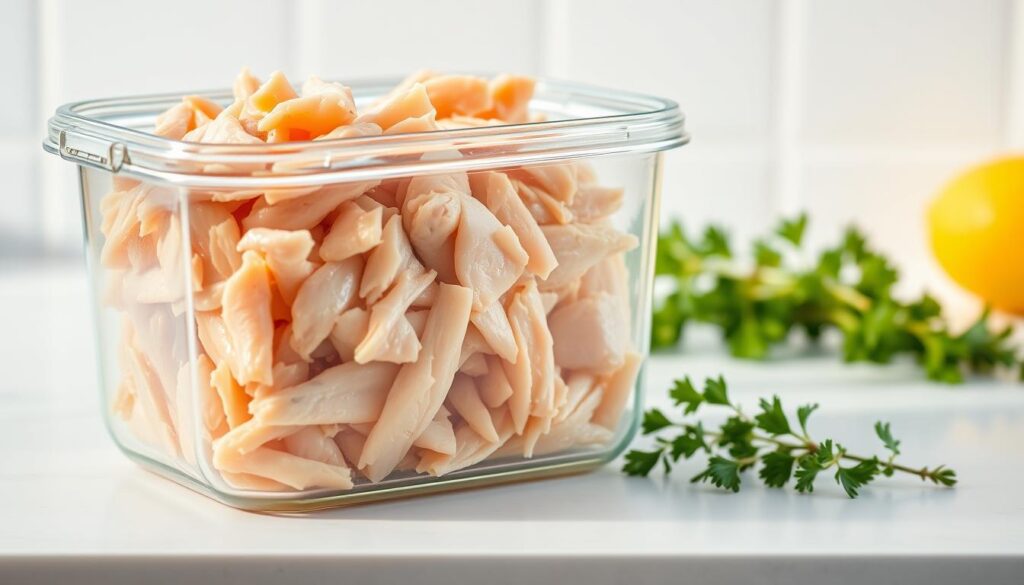
Refrigeration Tips
Store cooked meat in the fridge for up to 3 days. Use airtight containers to prevent odors and moisture loss. For shredded pieces, toss with 1–2 tbsp broth to retain juiciness.
Freezing for Later Use
Freeze portions in 2-cups batches for easy thawing. Label freezer bags with dates—frozen meat lasts 2 months. Thaw overnight in the fridge before reheating to 165°F.
| Storage Method | Duration | Best For |
|---|---|---|
| Refrigeration | 3 days | Salads, sandwiches |
| Freezing | 2 months | Soups, casseroles |
Saving the Cooking Liquid
Don’t discard the liquid—it’s packed with flavor. Strain and freeze broth in ice cube trays for portion control. Use it to cook grains or enhance sauces.
Pro tip: Clarify broth by simmering with egg whites, then straining through cheesecloth for crystal-clear results.
Best Uses for Boiled Chicken Breast
Boiled poultry becomes a kitchen MVP when used in versatile dishes. Its mild flavor and tender texture make it ideal for salads, soups, and baked recipes. Whether shredded or diced, it absorbs seasonings effortlessly.
Salads and Soups
Cooled pieces blend perfectly into leafy greens or grain bowls. For protein-packed salads like Coronation Chicken, toss shredded meat with curry mayo and grapes.
- Texture tip: Chill boiled meat before adding to avoid wilting greens.
- Soup hack: Simmer shredded breast in broth with veggies for 10 minutes.
“Boiled chicken’s neutral taste lets bold dressings or broths take center stage.”
Casseroles and Tacos
In baked dishes like Million Dollar Chicken Casserole, boiled meat stays moist under creamy sauces. For tacos, shred and sauté with taco seasoning for extra depth.
| Dish Type | Prep Time | Best Method |
|---|---|---|
| Enchilada Pie | 20 mins | Layer shredded meat with tortillas |
| Tamale Pie | 30 mins | Mix with cornbread batter |
Pro tip: Freeze pre-portioned shredded chicken for quick taco nights or casserole emergencies.
Conclusion
Your cooking success hinges on timing and temperature. Boneless cuts need less time, while bone-in pieces require patience. Always verify doneness with a thermometer for safe, juicy results.
This method opens doors to endless recipes. Try adding herbs or citrus to your cooking liquid for extra flavor. Leftover broth? Freeze it for future soups or sauces.
Keep food safety in mind. Store cooked poultry properly and reheat to 165°F. With these tips, you’ll turn simple boil chicken into delicious, versatile meals.
FAQ
What’s the best way to boil boneless, skinless chicken breasts?
Should I use water or broth for boiling chicken?
How do I know when the chicken is fully cooked?
Can I freeze boiled chicken for later use?
What’s the best way to use boiled chicken in meals?
How long can I keep boiled chicken in the fridge?
Can I save the cooking liquid after boiling chicken?
For more cooking tips, stay connected with us. We also recommend the cookbook Skinnytaste Simple: Easy, Healthy Recipes with 7 Ingredients or Fewer
For more Recipes about Chicken
